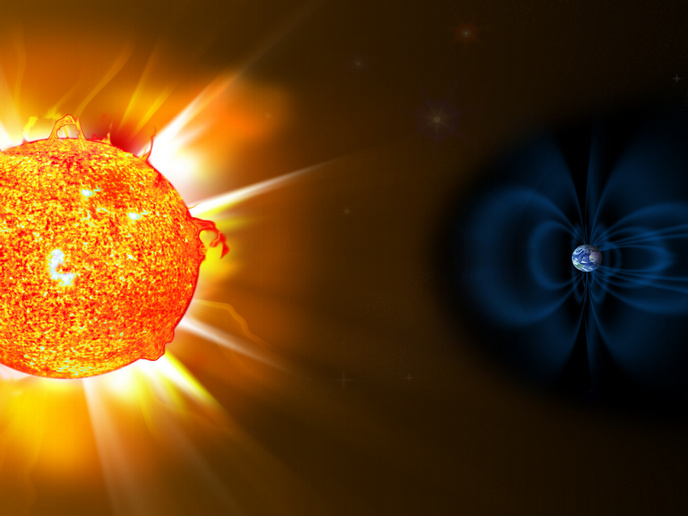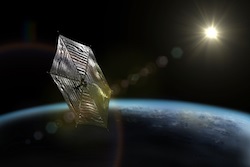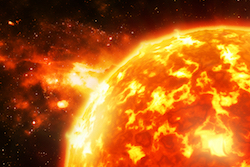Space weather forecast: storms on the way
Explosive eruptions on the surface of the sun are relatively common. Most solar storms miss Earth, as clouds of plasma released by solar flares hurl into space away from our home planet. Of those that travel towards Earth, only half interact with Earth’s magnetosphere, sparking geomagnetic storms and intensifying aurora displays. Understanding dynamical phenomena in the inner solar atmosphere that drive geomagnetic storms requires a combined multidisciplinary approach. The EU-funded project SOLSPANET(opens in new window) (Solar and space weather network of excellence) aimed to establish a prototypical pan-European research network promoting space situational awareness. Network members’ expertise ranged from analytical and numerical modelling skills to advanced observation techniques in visible to extreme ultraviolet wavelengths, decametre radio spectroscopy as well as low-frequency radio observations. The network also supported collaborations amongst early-stage researchers (ESRs) from EU and non-EU institutes. ESRs attended specialised courses to further develop their skills in space and solar weather data processing. Experienced researchers collected a large amount of data from different types of instruments and online resources. In addition, they developed analytical and numerical models that could become an integral part of future space weather nowcasting and forecasting systems. The SOLSPANET team devoted their efforts to establish a unified working environment for space weather researchers. Forecasting solar storms remains a challenge, and existing infrastructure is unlikely to deliver actionable advice. Irrespective of forecasting ability, space and ground observations provide for a better understanding of Earth’s space environment. A big solar storm could short out telecommunications satellites, interrupt radio communications, and crash power grids, besides sparking bright northern lights. Understanding the nature of cause-and-effect connections in geospace will in turn help researchers to improve forewarning for solar events that can cause widespread disruptions on Earth.







